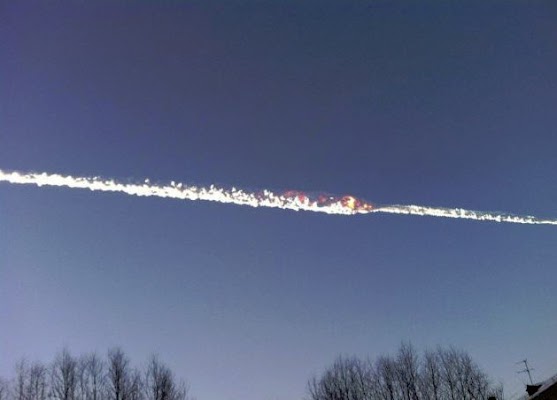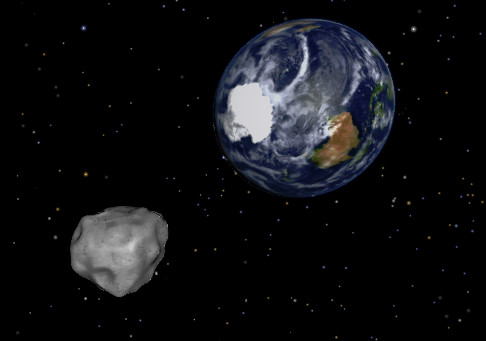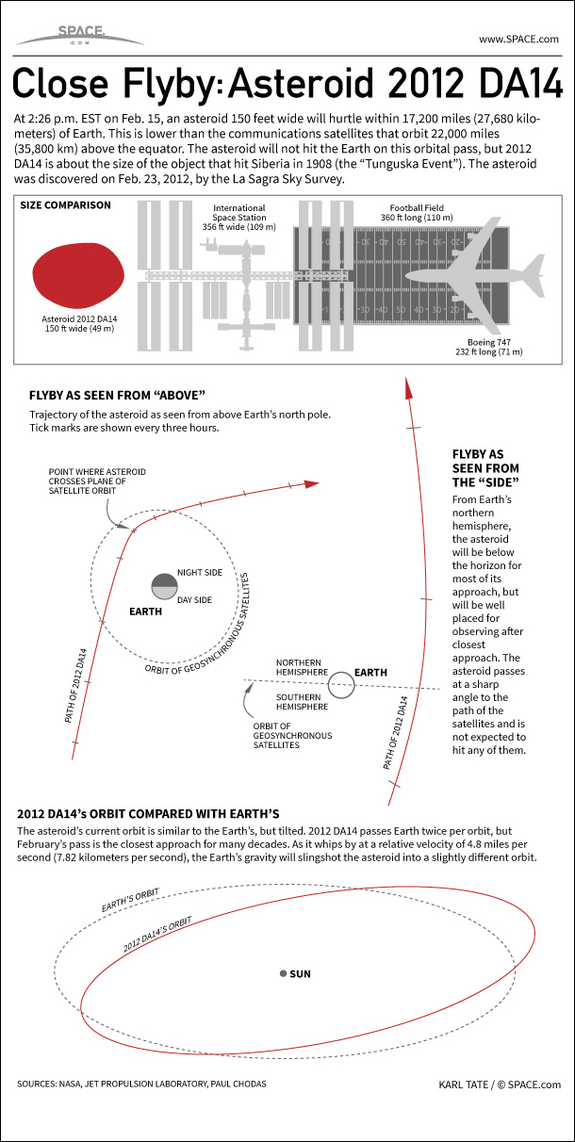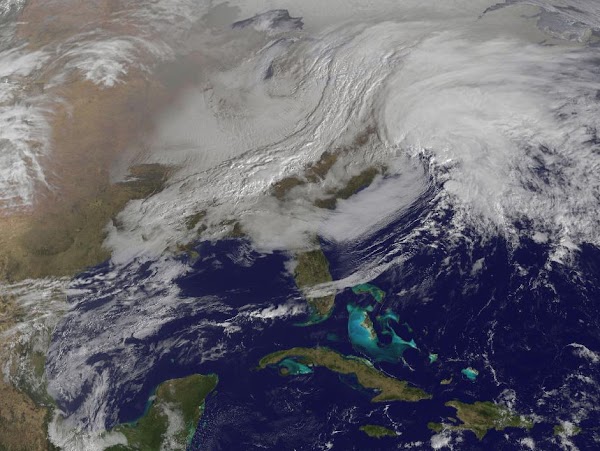
The Friday morning calm in Chelyabinsk, Russia was shattered by a meteor slamming into Earth’s atmosphere and exploding over the city in the Ural Mountains. The energy released was greater than that of the first atomic bombs and caused widespread destruction and injuries.
- Photo slideshow and video below
NASA says the 50 foot, 7,000 ton meteor entered the atmosphere at a speed of 40,000 mph and impacted at 9:20 a.m. local time (8:20 p.m. MST).
The energy released by the explosion has been estimated at 300 kilotons – far more than the 16 kiloton explosion of the bomb dropped on Hiroshima and 21 kilotons of the one dropped on Nagasaki.
The meteor lasted in the atmosphere for over 30 seconds before exploding approximately 15 miles above the planet.
Most of the fragments burnt up before reaching the ground however photos from the area did show a large, 20 foot wide hole in the ice on a nearby lake suspected to have been caused by a chunk of the rock.
The loud sonic boom and the resultant shockwave blew out windows in buildings across the area and is believed to have caused the collapse of a wall of an industrial building.
Russia media reports nearly 1,000 people reported injuries including 82 children, two of which are in intensive care. No fatalities have been reported and no one is believed to have been hit by any fragments.
NASA said the meteor was not related to asteroid 2012 DA14 which passed extremely close to the earth today. That asteroid is 150 feet across and came within 17,200 miles of the Earth.
More coverage:
Russian meteor photo slideshow
Video: Meteor explodes over Russia













